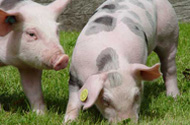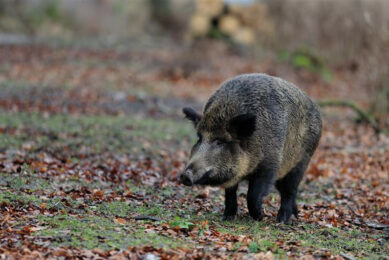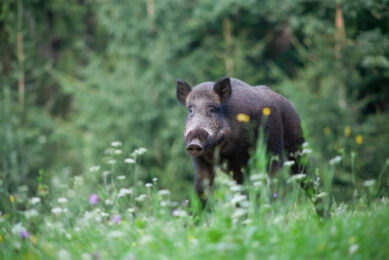Variation in resistance to PRRS virus in Pietrain and Miniature pigs

Researchers from Justus-Liebig-University in Giessen, Germany studied the variation in resistance to the Porcine Reproductive and Respiratory Syndrome Virus (PRRSV) in Pietrain and Miniature pigs.
Porcine reproductive and respiratory syndrome (PRRS) is one of the economically most important diseases of swine. Viraemia and the prolonged persistence of the virus are among the most critical factors. Virus replication and severity of disease vary with virus isolates, and there is rising evidence for a genetic component of the host susceptibility.
©
Dissecting the genetic basis of resistance/susceptibility to PRRS virus (PRRSV) might lead to improved knowledge on the molecular mechanisms of PRRS and the establishment of genetic markers for future disease control.
©
The aim of this study was to establish a porcine model with emphasized genetic differences in PRRSV susceptibility. Seven ‘Wiesenauer Miniature’ pigs (MI), a local German breed and eight commercial Pietrain (PI) pigs were challenged with 10(5) TCID(50) of an attenuated PRRSV strain (Ingelvac((R)) PRRSV MLV). Clinical status, viraemia and seroconversion of the pigs were compared. No clinical signs were observed during the experiment.
©
Viraemia peaked on day 6 p.i., with 100% of viraemic pigs in PI and on day 12 p.i with 87% of viraemic MI. Viraemia lasted for up to 35 days in MI and for at least 72 days in PI. This surprising result was confirmed by a second study with another four MI. MI and PI showed maximum virus titres of 10(2.5) TCID(50)/ml of serum and 10(4.5) TCID(50)/ml, respectively, indicating a virus replication in MI of approximately 3.3% that of PI over the complete period. MI were more efficient in antibody production.
©
With such pronounced breed differences, the model is of high relevance for the genetic dissection of PRRS pathogenesis and susceptibility.
©
This paper has been published in Journal of Animal Breeding and Genetics (2010, April)
©











